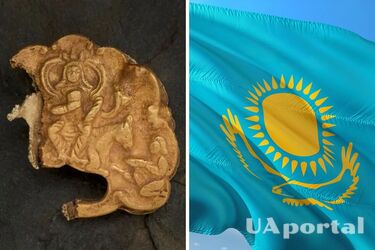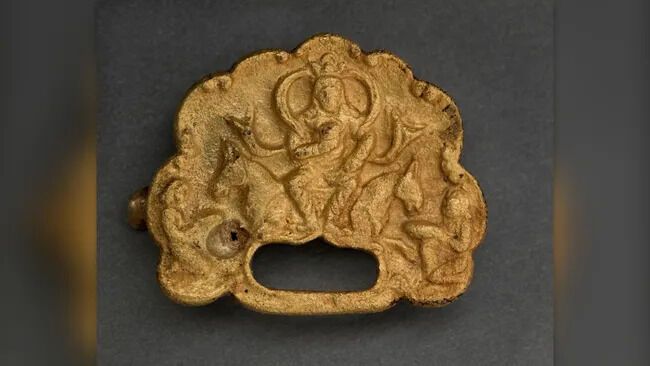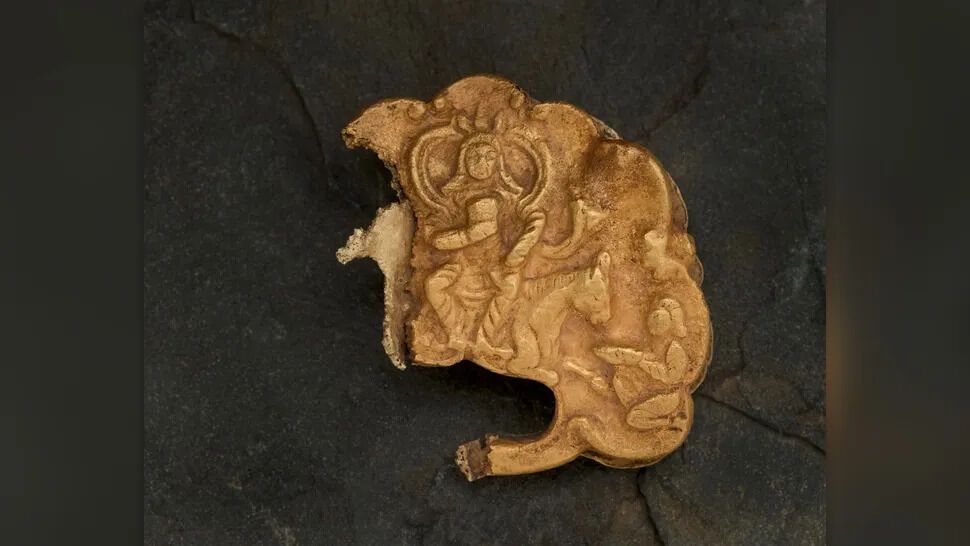1500-year-old gold buckles with the image of the ruler on the throne discovered in Kazakhstan (photo)

In Kazakhstan, archaeologists have discovered two gold jewelry pieces in a 1,500-year-old tomb that contain the oldest known images of the Great Khan, or "kagan," of the Göktürk. A nomadic confederation of Turkic-speaking peoples who lived in the region.
The magnificent golden plates depict a crowned sovereign sitting majestically on a throne in a saintly pose and surrounded by servants. This is reported by Live Science.
This clearly depicts the sacred nature of power in ancient Turkic society. The findings were taken from the site of Eleke Sazy near Kazakhstan's remote eastern border with China and Mongolia.
Archaeologists believe that the kagan depicted on both plates was a member of the ruling Ashyn clan and may have been a relative of Prince Gokturk.
Gokturk's sixth-century tomb contains the remains of a nobleman, probably a "tegin" whose burial place had become a "cult memorial complex" by the seventh century, which idolized the deceased.

Two golden tablets were found in the central chamber of the tomb where the prince was cremated; one was badly damaged by the cremation fire.
The Hagan is depicted in the center of each tablet, wearing an elaborate crown and seated on a throne with two horses on it; he is surrounded by two kneeling servants offering food from a plate and bowl.

As a reminder, a lost fragment of the Bible dating back to 1750 was found in the Vatican library.
If you want to get the latest news about the war and events in Ukraine, subscribe to our Telegram channel!
